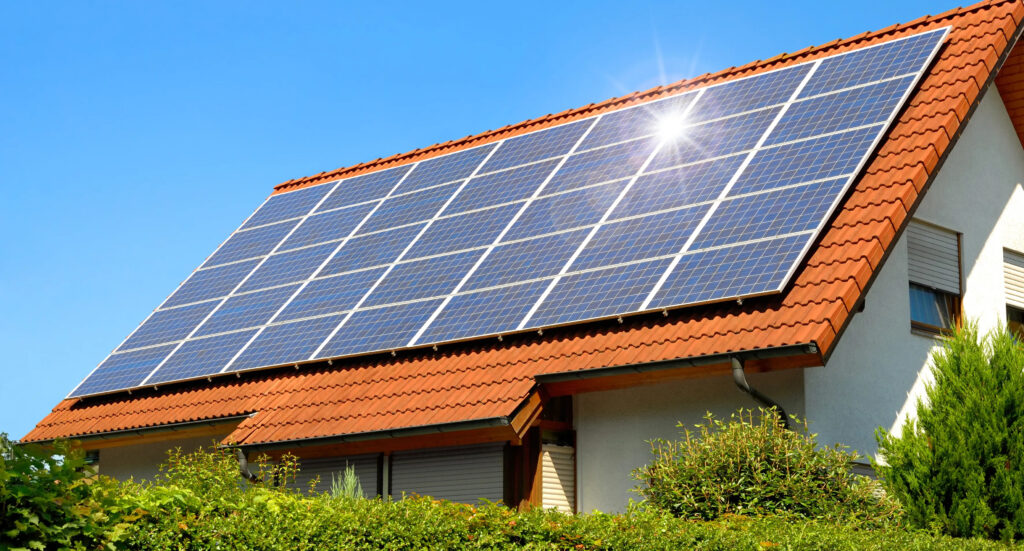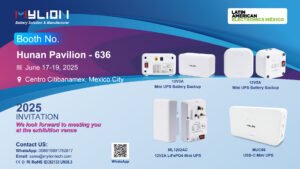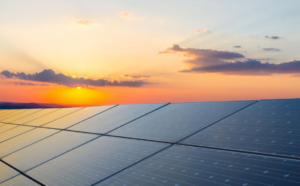1. The composition and principle of solar photovoltaic system
The solar photovoltaic system consists of the following three parts: solar cell components; charge and discharge controllers, inverters, test instruments and computer monitoring and other power electronic equipment and batteries or other energy storage and auxiliary power generation equipment.
Solar photovoltaic systems have the following characteristics:
No rotating parts, no noise;
No air pollution, no waste water;
No combustion process, no fuel required;
Simple maintenance and low maintenance cost;
Good operational reliability and stability;
The solar cell as a key component has a long service life, and the life of the crystalline silicon solar cell can reach more than 25 years;
It is easy to scale up power generation as needed.
Photovoltaic systems are widely used, and the basic forms of photovoltaic system applications can be divided into two categories: independent power generation systems and grid-connected power generation systems. The main application areas are mainly in aerospace aircraft, communication systems, microwave relay stations, TV turntables, photovoltaic water pumps and household power supply in areas without electricity and power shortages. With the needs of technological development and sustainable development of the world economy, developed countries have begun to promote urban photovoltaic grid-connected power generation in a planned way, mainly building household rooftop photovoltaic power generation systems and MW-level centralized large-scale grid-connected power generation systems. The application of solar photovoltaic systems has been vigorously promoted in transportation and urban lighting.
The scale and application form of photovoltaic systems are different. For example, the scale of the system is very large, ranging from 0.3-2W solar garden lights to MW-level solar photovoltaic power stations, such as 3.75kWp household roof power generation equipment and Dunhuang 10MW project. Its application forms are also various, and it can be widely used in many fields such as household, transportation, communication, and space applications. Although photovoltaic systems vary in size, their composition and working principles are basically the same. Figure 4-1 is a schematic diagram of a typical photovoltaic system supplying a DC load. It contains several main components in the photovoltaic system:
Photovoltaic module square array: It is composed of solar cell elements (also called photovoltaic cell modules) in series and parallel according to the system requirements. It converts solar energy into electrical energy for output under sunlight irradiation. It is the core component of the solar photovoltaic system.
Storage battery: store the electrical energy generated by the solar cell element, and release the stored electrical energy to meet the energy demand of the load when the light is insufficient or at night, or when the load demand is greater than the power generated by the solar cell element. It is the storage battery of the solar photovoltaic system. capable parts. At present, lead-acid batteries are commonly used in solar photovoltaic systems. For systems with higher requirements, deep-discharge valve-regulated sealed lead-acid batteries, deep-discharge liquid-absorbing lead-acid batteries, etc. are usually used.
Controller: It regulates and controls the charging and discharging conditions of the battery, and controls the power output of the solar cell element and the battery to the load according to the power demand of the load. It is the core control part of the entire system. With the development of the solar photovoltaic industry, the functions of the controller are becoming more and more powerful, and there is a trend to integrate the traditional control part, inverter and monitoring system. For example, the controllers of AES’ SPP and SMD series integrate the above three a function.
Inverter: In the solar photovoltaic power supply system, if there is an AC load, an inverter device is used to convert the DC power generated by the solar cell element or the DC power released by the battery into the AC power required by the load.
The basic working principle of the solar photovoltaic power supply system is to charge the battery with the electric energy generated by the solar cell element through the control of the controller under the irradiation of sunlight, or directly supply power to the load when the load demand is met. Then, the battery supplies power to the DC load under the control of the controller. For a photovoltaic system containing an AC load, an inverter needs to be added to convert the DC power into an AC power. The application of photovoltaic systems takes many forms, but the basic principles are similar. For other types of photovoltaic systems, the control mechanism and system components are only different according to actual needs, and different types of photovoltaic systems will be described in detail below.
2. Classification and introduction of photovoltaic systems
Generally, photovoltaic systems are divided into independent systems, grid-connected systems and hybrid systems. According to the application form, application scale and load type of the photovoltaic system, the photovoltaic power supply system can be divided into the following six types: small solar power supply system (Small DC); simple DC system (Simple DC system) DC); large solar power supply system (Large DC); AC, DC power supply system (AC/DC); grid-connected system (Utility Grid Connect); hybrid power supply system (Hybrid); grid-connected hybrid system.
Photovoltaic power generation is an electronic component technology that uses the photovoltaic effect of the semiconductor interface to directly convert light energy into electrical energy. The key component of this technology is the solar cell. After the solar cells are connected in series, they can be packaged and protected to form a large-area solar cell element, and then combined with components such as a power controller to form a photovoltaic power generation device. The advantage of photovoltaic power generation is that it is less restricted by geographical areas, because the sun shines on the earth; the photovoltaic system also has the advantages of safety and reliability, no noise, low pollution, no need to consume fuel and erect transmission lines, and can generate electricity and power locally, and the construction period is short.
Photovoltaic power generation is based on the principle of photovoltaic effect, using solar cells to directly convert sunlight energy into electrical energy. Regardless of whether it is used independently or connected to the grid, the photovoltaic power generation system is mainly composed of three parts: solar panels (components), controllers and inverters. They are mainly composed of electronic components and do not involve mechanical parts. Therefore, photovoltaic power generation equipment Extremely refined, reliable and stable, long life, easy installation and maintenance. In theory, photovoltaic power generation technology can be used in any occasion that requires power, ranging from spacecraft, down to household power, large to megawatt power stations, small to toys, photovoltaic power is everywhere. The most basic components of solar photovoltaic power generation are solar cells (sheets), including monocrystalline silicon, polycrystalline silicon, amorphous silicon and thin film cells. At present, monocrystalline and polycrystalline batteries are used the most, and amorphous batteries are used in some small systems and auxiliary power sources for calculators.












